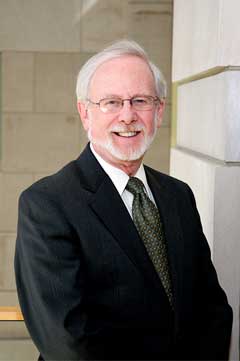Dorr Dearborn ’61 has led an uncommonly prolific career in medicine, during which he has seen the national spotlight, received research funding from the most prominent national and governmental organizations, and, somehow, still maintained lifelong ties to his church and alma maters, among other things.
It began with a chemistry major at Willamette and progressed through a biochemistry PhD and MD from the University of Minnesota. Dearborn went into pediatrics afterward, moving to Case Western Reserve University in 1974 and immediately directing the cystic fibrosis laboratory there. Several appointments later, he is the Mary Ann Swetland Professor and Chairman of the Department of Environmental Health Sciences, and Director of the Swetland Center for Environmental Health.
Some of Dearborn’s most cited work came about in the fall of 1994, when he recognized a pattern of pulmonary hemorrhage in Cleveland infants and traced the problem to a type of toxigenic mold. The infants, he saw, had been living in water-damaged homes and were continually exposed to what people now call “black toxic mold,” which contains a toxin whose compounds are the same as some chemical warfare agents. Within two years, Dearborn had instituted the Pulmonary Hemosiderosis Prevention Program, a public health initiative involving the local health and housing agencies; the initiative has since played a role in decreasing the incidence of the mold-related disorder. He also has established a research program — supported by the NIH's National Institute of Environmental Health Sciences, the U.S. Environmental Protection Agency, and the U.S. Department of Housing and Urban Development — that studies the effect of toxic mold on the lungs of infant animals and the impact of mold and moisture on the health of infants and young children.


